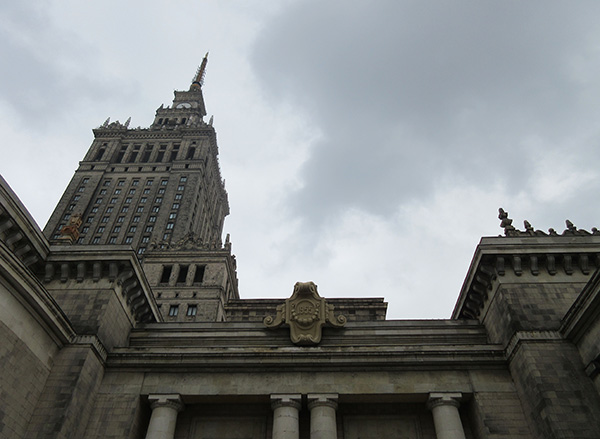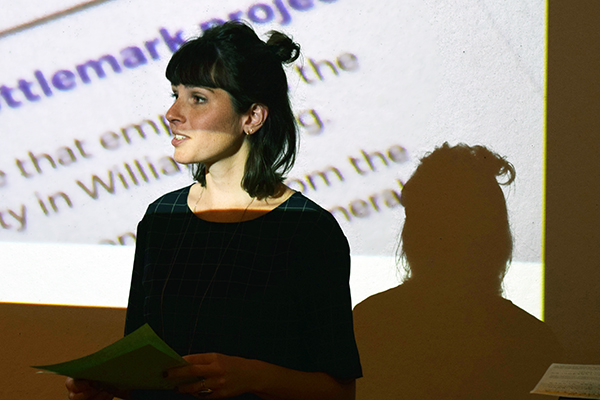
The Palace of Culture and Science, Warsaw. Photo by Susan Yelavich.
by Susan Yelavich
To all outward appearances, Warsaw’s Palace of Culture and Science would seem to be impregnable. This, despite the fact that is truly a people’s palace and has been since it was completed in 1955. A ‘gift’ from Stalin to the then newly-minted Communist state of Poland, the Palace was conceived as a ‘social condenser,’ a work of architecture that for all its height would flatten class differences. Its interiors housed – and continue to house – theaters, museums, cafes, restaurants, university classrooms, a pool, offices, auditoriums, and meeting spaces, which are variously open to citizens, tourists, and government employees. Generations of Warsavians have learned to swim here, taken courses, listened to jazz, proposed to each other, and had their wedding photos taken on the viewing deck on the 30th floor. Some even correspond with the Palace, actually writing letters to the building that are duly archived on the 15th floor. The Palace of Culture has taken on the same sort of supra-natural power, not unlike that which has accrued around the legend of Stalin, himself. (Urban legend has it that Stalin has been seen roaming the Moscow Metro, appearing to the faithful, weeping through the eyes of his statues – literally and figuratively haunting the Russian imagination.)
The Palace – a wound inflicted by Stalin, a benevolent ‘house of culture,’ the monumental centerpiece of contemporary Warsaw – was the focus of an intensive MA Design Studies course organized in conjunction with the School of Form in Poznan, Poland, from March 18th to March 25th. “The Palace of Culture: An Exploration in Design, Humanities, and Social Sciences,” was the third in a troika of programs,1 which were dedicated to responding to sites of trauma, organized by Parsons and the New School for Social Research in Spring 2017.
(more…)



